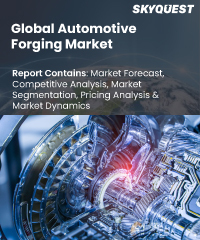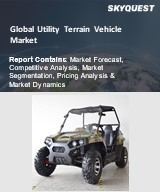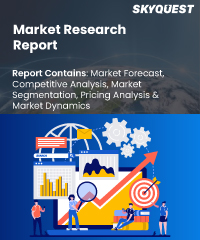USD 45.92 Billion

Global Automotive Forging Market Size, Share, Growth Analysis, By Vehicle type(Passenger Cars, Light Commercial Vehicles), By Material(Steel and Aluminum), By Application(Gears, Crankshaft), By Technology(Closed Die, Open Die) - Industry Forecast 2024-2031
Report ID:
SQMIG25C2093 |
Region:
Global |
Published Date: February, 2024
Pages:
157
|
Tables:
122 |
Figures:
77
Global Automotive Forging Market Insights
Global Automotive Forging Market size was valued at USD 45.92 Billion in 2022 and is poised to grow from USD 48.12 Billion in 2023 to USD 70.03 Billion by 2031, at a CAGR of 4.80% during the forecast period (2024-2031).
The global automotive forging market has exhibited steady growth in recent years, reflecting the ever-evolving dynamics of the automotive industry. Manufacturers in this sector have been driven by a commitment to enhancing the structural integrity and performance of automotive components. This has led to a growing demand for forged parts such as engine components, transmission gears, and chassis elements.
Furthermore, sustainability and efficiency have become key considerations, prompting a shift towards lightweight materials and innovative forging techniques. As the automotive industry continues to explore electrification and advanced technologies, the automotive forging market is poised for further innovation and adaptation to meet these evolving needs. Collaboration between manufacturers, technological advancements, and a focus on sustainable practices are expected to play pivotal roles in shaping the future of this market.
US Automotive Forging Market is poised to grow at a sustainable CAGR for the next forecast year.
Market snapshot - 2024-2031
Global Market Size
Largest Segment
Steel
Fastest Growth
Steel
Growth Rate
4.80% CAGR
To get more reports on the above market click here to Buy The Report
Global Automotive Forging Market Segmental Analysis
The global automotive forging market is segmented on the basis of Vehicle type, Material, Application, Technology and region. Based on Vehicle type the Material it is segmented as Passenger Cars, Light Commercial Vehicles, Medium & Heavy Commercial Vehicles, Agriculture Machinery, Construction Equipment, and Others. On the basis of Material the market is segmented as Steel and Aluminum. On the basis of Application the market is segmented as Gears, Crankshaft, Pistons, Axle, Bearings, Connecting Rods, and Others. Based on Technology, it Is segregated into Closed Die, Open Die, and Others. Based on region, the market is segmented into North America, Europe, Asia Pacific, Middle East and Africa, and Latin America.
Automotive Forging Market Analysis by Vehicle Type
In the current automotive forging market, Passenger Cars stand out as the dominating vehicle type. They consistently command a significant share due to the high demand for passenger vehicles worldwide. This dominance is driven by factors like urbanization, increasing disposable incomes, and consumer preferences for personal transportation. Furthermore, the constant drive for innovation and improved safety standards in passenger vehicles fuels the demand for high-performance, precision-engineered forged components.
However, Electric Vehicles (EVs) are emerging as the fastest-growing segment. As environmental concerns and regulations push for cleaner transportation options, the automotive industry is witnessing a rapid shift towards electric mobility. Forging components for EVs, such as lightweight and high-strength parts for batteries and electric drivetrains, are in high demand, contributing to the rapid growth of this sector.
Automotive Forging Market Analysis by Application
Bearings have emerged as the dominating component in the global automotive forging market due to their critical role in vehicle functionality. Bearings are essential for reducing friction and facilitating the smooth rotation of various parts in the automobile, such as the wheels, engine components, and transmission systems. The demand for fuel-efficient vehicles and the increasing emphasis on reducing emissions have led to a growing need for more efficient and durable bearings. Moreover, the expanding electric vehicle (EV) market relies heavily on bearings for the efficient functioning of electric motors and drivetrain systems.
However, Connecting Rods are experiencing the fastest growth in the market. This growth can be attributed to the increasing focus on lightweighting in the automotive industry. Connecting rods are crucial components in an engine, connecting the pistons to the crankshaft. To enhance fuel efficiency and reduce emissions, automakers are continuously striving to reduce the weight of engine components. Forging technology allows for the production of lightweight yet strong connecting rods, which play a pivotal role in achieving these objectives. Additionally, as hybrid and electric vehicles become more prevalent, the demand for lightweight and durable connecting rods is on the rise.
To get detailed analysis on other segments, Request For Free Sample Report
Global Automotive Forging Market Regional Insights
North America stands as the dominating and largest player in the global automotive forging market due to several key factors. Firstly, it boasts a mature and well-established automotive industry, home to major automakers and a robust network of suppliers and forging companies. This ecosystem benefits from advanced manufacturing technologies, stringent quality standards, and a skilled workforce, enabling efficient and high-quality forging production. Moreover, North America's geographical proximity to its primary automotive export markets, such as the United States and Canada, provides a strategic advantage in terms of logistics and supply chain efficiency.
However, the Asia Pacific region is currently the fastest-growing market for automotive forging. This growth can be attributed to several factors including the rapid expansion of the automotive sector in countries like China and India, driven by increasing consumer demand and urbanization. Additionally, lower production costs and a growing number of collaborations between international automotive manufacturers and local suppliers in the region contribute to its rapid expansion.
- Largest
- Fastest
To know more about the market opportunities by region and country, click here to
Buy The Complete Report
Global Automotive Forging Market Dynamics
Automotive Forging Market Drivers
Market Demand for Lightweight Materials
- As automakers strive to meet stringent fuel efficiency and emission standards, they are turning to lightweight forged components made from materials like aluminum and advanced high-strength steels. These materials help reduce vehicle weight, improving fuel economy and overall performance. The growing consumer preference for fuel-efficient and environmentally friendly vehicles is propelling the adoption of lightweight forged parts, making it a crucial driver for the industry's growth.
Automotive Forging Market Restraints
Market Fragmentation
- One major key restraint in the global automotive forging market is market fragmentation. The industry comprises numerous small to medium-sized forging companies, each specializing in specific components or materials. This fragmentation can lead to challenges in standardization, supply chain coordination, and cost-effectiveness, making it difficult to achieve economies of scale and streamlined production processes. As a result, the market faces inefficiencies and increased competition, potentially impacting profit margins and overall market growth.
Request Free Customization of this report to help us to meet your business objectives.
Global Automotive Forging Market Competitive Landscape
The competitive landscape in the global automotive forging market is characterized by intense rivalry among established companies and new entrants striving to gain a foothold. These entities focus on leveraging advanced technologies and forging methods to produce high-quality components that meet the industry's evolving demands for lightweight and durable parts.
Additionally, innovation remains a critical driver as companies invest in research and development to create forging solutions that align with sustainability goals and stringent regulatory requirements. Collaborations and partnerships across the automotive value chain are also notable trends as companies seek to optimize supply chain efficiencies and expand their market reach.
As competition intensifies, customer-centric approaches and the ability to adapt swiftly to changing market dynamics are key factors determining success in this highly competitive sector.
Automotive Forging Market Top Player’s Company Profiles
- ThyssenKrupp AG (Germany)
- CIE Automotive (Spain)
- NTN Corporation (Japan)
- American Axle and Manufacturing Inc. (US)
- Bharat Forge Limited (India)
- Ramkrishna Forgings (India)
- Dana Limited (US)
- Meritor Inc. (US)
- ZF Friedrichshafen AG (Germany)
- Jiangsu Pacific Precision Forging (China)
- Siderforgerossi Group S.p.A. (Italy)
- Grupo Euskal Forging, S.L. (Spain)
- Nippon Steel Corporation (Japan)
- Nippon Steel & Sumitomo Metal Corporation (Japan)
- FormTech Industries LLC (US)
- Hirschvogel Automotive Group (Germany)
- Norsk Hydro ASA (Norway)
- Allegheny Technologies Incorporated (US)
- SIFCO Industries, Inc. (US)
- Precision Castparts Corp. (US)
Automotive Forging Market Recent Developments
- In March 2023, Ramkrishna Forgings established a subsidiary named RKFL Engineering Industry Private Limited, specializing in metal forging, pressing, rolling, and stamping processes. This subsidiary's formation is part of a resolution plan under the Corporate Insolvency Resolution Process (CIRP) for JMT Auto, an Amtek Auto group unit.
- In February 2023, Jiangsu Pacific Precision Forging invested approximately $64.9 million in constructing a new energy vehicle parts plant in Thailand, set to become fully operational within five years. The company, based in Taizhou, will focus on producing vehicle gears, forging parts, and assembly products at this facility.
- July 2022 saw Siderforgerossi Group S.p.A. acquire Grupo Euskal Forging, S.L. and its subsidiaries, a move that positions the company as a significant player in the forgings market for both offshore and onshore applications.
- In May 2022, Ramkrishna Forgings Limited secured a multi-year contract worth $13.5 million annually for manufacturing critical chassis-related systems and components primarily used in trailers, trucks, and buses in the United States.
- In March 2022, American Axle & Manufacturing announced winning multiple contracts for next-generation full-sized truck rear and front axles with global OEM customers. These contracts, along with a previously announced award in early 2021, are expected to generate more than $10 billion in revenue spanning from mid-decade into the 2030s.
Global Automotive Forging Key Market Trends
- Rise of Electric Vehicle (EV) Forging: As the automotive sector transitions towards cleaner and more sustainable transportation, forged parts are increasingly utilized in EV drivetrains and structural components due to their lightweight and high-strength characteristics. This trend is expected to drive substantial growth in the forging sector, with companies focusing on specialized forging techniques and materials tailored to the unique requirements of EVs. Additionally, the shift towards EVs is likely to spur innovation in forging technologies to meet the specific demands of this evolving market segment.
Global Automotive Forging Market SkyQuest Analysis
SkyQuest’s ABIRAW (Advanced Business Intelligence, Research & Analysis Wing) is our Business Information Services team that Collects, Collates, Correlates, and Analyses the Data collected by means of Primary Exploratory Research backed by robust Secondary Desk research.
According to global Automotive forging market analysis, it reveals several noteworthy insights. The market is characterized by a dynamic landscape where established players and emerging entrants strive to capture a larger share. With the automotive industry's increasing emphasis on lightweighting, durability, and efficiency, forging processes have gained significance due to their ability to meet these requirements. The rise of electric vehicles (EVs) has introduced a new dimension, as forged components play a pivotal role in enhancing the performance and range of these vehicles.
Moreover, strategic acquisitions and partnerships have become prevalent strategies for companies aiming to expand their product portfolios and market presence. As sustainability and regulatory pressures mount, forging companies are likely to focus on developing eco-friendly practices and materials, aligning with the broader automotive industry's shift towards greener solutions.
Overall, the automotive forging market is poised for further evolution as technological advancements and market dynamics continue to shape its trajectory.
| Report Metric | Details |
|---|---|
| Market size value in 2023 | USD 45.92 Billion |
| Market size value in 2031 | USD 70.03 Billion |
| Growth Rate | 4.80% |
| Forecast period | 2024-2031 |
| Forecast Unit (Value) | USD Billion |
| Segments covered |
|
| Regions covered | North America (US, Canada), Europe (Germany, France, United Kingdom, Italy, Spain, Rest of Europe), Asia Pacific (China, India, Japan, Rest of Asia-Pacific), Latin America (Brazil, Rest of Latin America), Middle East & Africa (South Africa, GCC Countries, Rest of MEA) |
| Companies covered |
|
| Customization scope | Free report customization with purchase. Customization includes:-
|
To get a free trial access to our platform which is a one stop solution for all your data requirements for quicker decision making. This platform allows you to compare markets, competitors who are prominent in the market, and mega trends that are influencing the dynamics in the market. Also, get access to detailed SkyQuest exclusive matrix.
Buy The Complete Report to read the analyzed strategies adopted by the top vendors either to retain or gain market share
Table Of Content
Executive Summary
Market overview
- Exhibit: Executive Summary – Chart on Market Overview
- Exhibit: Executive Summary – Data Table on Market Overview
- Exhibit: Executive Summary – Chart on Global Automotive Forging Market Characteristics
- Exhibit: Executive Summary – Chart on Market by Geography
- Exhibit: Executive Summary – Chart on Market Segmentation
- Exhibit: Executive Summary – Chart on Incremental Growth
- Exhibit: Executive Summary – Data Table on Incremental Growth
- Exhibit: Executive Summary – Chart on Vendor Market Positioning
Parent Market Analysis
Market overview
Market size
- Market Dynamics
- Exhibit: Impact analysis of DROC, 2021
- Drivers
- Opportunities
- Restraints
- Challenges
- Exhibit: Impact analysis of DROC, 2021
- SWOT Analysis
KEY MARKET INSIGHTS
- Technology Analysis
- (Exhibit: Data Table: Name of technology and details)
- Pricing Analysis
- (Exhibit: Data Table: Name of technology and pricing details)
- Supply Chain Analysis
- (Exhibit: Detailed Supply Chain Presentation)
- Value Chain Analysis
- (Exhibit: Detailed Value Chain Presentation)
- Ecosystem Of the Market
- Exhibit: Parent Market Ecosystem Market Analysis
- Exhibit: Market Characteristics of Parent Market
- IP Analysis
- (Exhibit: Data Table: Name of product/technology, patents filed, inventor/company name, acquiring firm)
- Trade Analysis
- (Exhibit: Data Table: Import and Export data details)
- Startup Analysis
- (Exhibit: Data Table: Emerging startups details)
- Raw Material Analysis
- (Exhibit: Data Table: Mapping of key raw materials)
- Innovation Matrix
- (Exhibit: Positioning Matrix: Mapping of new and existing technologies)
- Pipeline product Analysis
- (Exhibit: Data Table: Name of companies and pipeline products, regional mapping)
- Macroeconomic Indicators
COVID IMPACT
- Introduction
- Impact On Economy—scenario Assessment
- Exhibit: Data on GDP - Year-over-year growth 2016-2022 (%)
- Revised Market Size
- Exhibit: Data Table on Global Automotive Forging Market size and forecast 2021-2027 ($ million)
- Impact Of COVID On Key Segments
- Exhibit: Data Table on Segment Market size and forecast 2021-2027 ($ million)
- COVID Strategies By Company
- Exhibit: Analysis on key strategies adopted by companies
MARKET DYNAMICS & OUTLOOK
- Market Dynamics
- Exhibit: Impact analysis of DROC, 2021
- Drivers
- Opportunities
- Restraints
- Challenges
- Exhibit: Impact analysis of DROC, 2021
- Regulatory Landscape
- Exhibit: Data Table on regulation from different region
- SWOT Analysis
- Porters Analysis
- Competitive rivalry
- Exhibit: Competitive rivalry Impact of key factors, 2021
- Threat of substitute products
- Exhibit: Threat of Substitute Products Impact of key factors, 2021
- Bargaining power of buyers
- Exhibit: buyers bargaining power Impact of key factors, 2021
- Threat of new entrants
- Exhibit: Threat of new entrants Impact of key factors, 2021
- Bargaining power of suppliers
- Exhibit: Threat of suppliers bargaining power Impact of key factors, 2021
- Competitive rivalry
- Skyquest special insights on future disruptions
- Political Impact
- Economic impact
- Social Impact
- Technical Impact
- Environmental Impact
- Legal Impact
Market Size by Region
- Chart on Market share by geography 2021-2027 (%)
- Data Table on Market share by geography 2021-2027(%)
- North America
- Chart on Market share by country 2021-2027 (%)
- Data Table on Market share by country 2021-2027(%)
- USA
- Exhibit: Chart on Market share 2021-2027 (%)
- Exhibit: Market size and forecast 2021-2027 ($ million)
- Canada
- Exhibit: Chart on Market share 2021-2027 (%)
- Exhibit: Market size and forecast 2021-2027 ($ million)
- Europe
- Chart on Market share by country 2021-2027 (%)
- Data Table on Market share by country 2021-2027(%)
- Germany
- Exhibit: Chart on Market share 2021-2027 (%)
- Exhibit: Market size and forecast 2021-2027 ($ million)
- Spain
- Exhibit: Chart on Market share 2021-2027 (%)
- Exhibit: Market size and forecast 2021-2027 ($ million)
- France
- Exhibit: Chart on Market share 2021-2027 (%)
- Exhibit: Market size and forecast 2021-2027 ($ million)
- UK
- Exhibit: Chart on Market share 2021-2027 (%)
- Exhibit: Market size and forecast 2021-2027 ($ million)
- Rest of Europe
- Exhibit: Chart on Market share 2021-2027 (%)
- Exhibit: Market size and forecast 2021-2027 ($ million)
- Asia Pacific
- Chart on Market share by country 2021-2027 (%)
- Data Table on Market share by country 2021-2027(%)
- China
- Exhibit: Chart on Market share 2021-2027 (%)
- Exhibit: Market size and forecast 2021-2027 ($ million)
- India
- Exhibit: Chart on Market share 2021-2027 (%)
- Exhibit: Market size and forecast 2021-2027 ($ million)
- Japan
- Exhibit: Chart on Market share 2021-2027 (%)
- Exhibit: Market size and forecast 2021-2027 ($ million)
- South Korea
- Exhibit: Chart on Market share 2021-2027 (%)
- Exhibit: Market size and forecast 2021-2027 ($ million)
- Rest of Asia Pacific
- Exhibit: Chart on Market share 2021-2027 (%)
- Exhibit: Market size and forecast 2021-2027 ($ million)
- Latin America
- Chart on Market share by country 2021-2027 (%)
- Data Table on Market share by country 2021-2027(%)
- Brazil
- Exhibit: Chart on Market share 2021-2027 (%)
- Exhibit: Market size and forecast 2021-2027 ($ million)
- Rest of South America
- Exhibit: Chart on Market share 2021-2027 (%)
- Exhibit: Market size and forecast 2021-2027 ($ million)
- Middle East & Africa (MEA)
- Chart on Market share by country 2021-2027 (%)
- Data Table on Market share by country 2021-2027(%)
- GCC Countries
- Exhibit: Chart on Market share 2021-2027 (%)
- Exhibit: Market size and forecast 2021-2027 ($ million)
- South Africa
- Exhibit: Chart on Market share 2021-2027 (%)
- Exhibit: Market size and forecast 2021-2027 ($ million)
- Rest of MEA
- Exhibit: Chart on Market share 2021-2027 (%)
- Exhibit: Market size and forecast 2021-2027 ($ million)
KEY COMPANY PROFILES
- Competitive Landscape
- Total number of companies covered
- Exhibit: companies covered in the report, 2021
- Top companies market positioning
- Exhibit: company positioning matrix, 2021
- Top companies market Share
- Exhibit: Pie chart analysis on company market share, 2021(%)
- Total number of companies covered
Methodology
For the Global Automotive Forging Market, our research methodology involved a mixture of primary and secondary data sources. Key steps involved in the research process are listed below:
1. Information Procurement: This stage involved the procurement of Market data or related information via primary and secondary sources. The various secondary sources used included various company websites, annual reports, trade databases, and paid databases such as Hoover's, Bloomberg Business, Factiva, and Avention. Our team did 45 primary interactions Globally which included several stakeholders such as manufacturers, customers, key opinion leaders, etc. Overall, information procurement was one of the most extensive stages in our research process.
2. Information Analysis: This step involved triangulation of data through bottom-up and top-down approaches to estimate and validate the total size and future estimate of the Global Automotive Forging Market.
3. Report Formulation: The final step entailed the placement of data points in appropriate Market spaces in an attempt to deduce viable conclusions.
4. Validation & Publishing: Validation is the most important step in the process. Validation & re-validation via an intricately designed process helped us finalize data points to be used for final calculations. The final Market estimates and forecasts were then aligned and sent to our panel of industry experts for validation of data. Once the validation was done the report was sent to our Quality Assurance team to ensure adherence to style guides, consistency & design.
Analyst Support
Customization Options
With the given market data, our dedicated team of analysts can offer you the following customization options are available for the Global Automotive Forging Market:
Product Analysis: Product matrix, which offers a detailed comparison of the product portfolio of companies.
Regional Analysis: Further analysis of the Global Automotive Forging Market for additional countries.
Competitive Analysis: Detailed analysis and profiling of additional Market players & comparative analysis of competitive products.
Go to Market Strategy: Find the high-growth channels to invest your marketing efforts and increase your customer base.
Innovation Mapping: Identify racial solutions and innovation, connected to deep ecosystems of innovators, start-ups, academics, and strategic partners.
Category Intelligence: Customized intelligence that is relevant to their supply Markets will enable them to make smarter sourcing decisions and improve their category management.
Public Company Transcript Analysis: To improve the investment performance by generating new alpha and making better-informed decisions.
Social Media Listening: To analyze the conversations and trends happening not just around your brand, but around your industry as a whole, and use those insights to make better Marketing decisions.
Global Automotive Forging Market Report Snapshots
Want to customize this report?
Our industry expert will work with you to provide you with customized data in a short amount of time.
REQUEST FREE CUSTOMIZATION


 USA (+1) 351-333-4748
USA (+1) 351-333-4748
